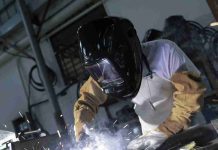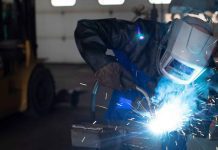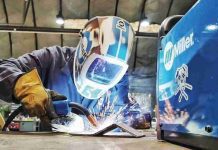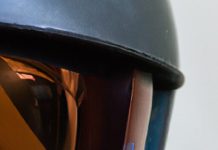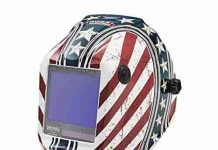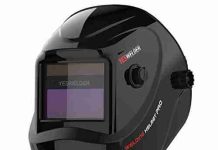We are here to enlighten you about the fascinating world of pipeliner welding helmets. What exactly is a pipeliner welding helmet, you may ask? Well, let us tell you. This unique type of helmet is specifically designed for the demanding and rigorous tasks of pipeline welding. It offers not only protection for the welder’s face and eyes but also ensures optimal visibility in even the harshest working conditions. So, get ready to discover the ins and outs of this essential piece of equipment that plays a vital role in the world of welding. A pipeliner welding helmet is a specialized type of helmet designed to protect welders during pipelining projects. It is specifically designed to provide superior protection, enhanced comfort, and enhanced visibility for welders working in the challenging conditions of pipeline welding.
Basic Function
The basic function of a pipeliner welding helmet is to protect the welder’s face, eyes, and neck from the intense heat, sparks, and debris generated during the welding process. It consists of a sturdy helmet shell made of heat-resistant and durable material, usually fiberglass or thermoplastic, which encloses the welder’s head and face. The helmet is equipped with a protective lens that shields the welder’s eyes from the bright and harmful light emitted during welding.
Design and Structure
Pipeliner welding helmets are designed with the specific needs of pipeline welders in mind. They typically feature a streamlined and lightweight design to minimize the strain on the neck and provide maximum comfort during long hours of use. The helmets are also designed to have a balanced weight distribution, ensuring that the weight is evenly distributed across the head and reducing strain on the neck muscles. Additionally, many pipeliner welding helmets come with an adjustable headgear system, allowing for a customized and secure fit.
Key Features
Pipeliner welding helmets come with several key features that make them highly effective and efficient for pipeline welding. One of the most important features is the welding lens. These lenses have excellent optical clarity, providing a clear and unobstructed view of the welding area. Additionally, they are designed to provide appropriate shade levels to protect the welder’s eyes from the intense brightness of welding arcs.
Another key feature of pipeliner welding helmets is the filter reaction time. This refers to the speed at which the lens darkens when the welding arc is struck, protecting the welder’s eyes from the harmful ultraviolet (UV) and infrared (IR) rays emitted during welding. A fast filter reaction time is essential to ensure the welder’s safety and prevent eye fatigue.
Durability and longevity are also important features of pipeliner welding helmets. These helmets are built to withstand the rugged conditions of pipeline welding, including exposure to high temperatures, sparks, and debris. They are made from sturdy and heat-resistant materials that can withstand extreme welding environments.
Usage
Pipeliner welding helmets are primarily used in pipeline welding applications. They are designed to provide maximum protection and comfort for welders working in this specialized field. The helmets are commonly used by professional pipeline welders who work on various types of pipelines, including oil and gas pipelines, water pipelines, and industrial pipelines.
Welders need to wear these helmets throughout the welding process to ensure their safety. The helmet’s lens must be in the down position for eye protection before striking an arc. Once the welding is complete, the lens can be lifted to allow for clear vision and normal communication.
Benefits of a Pipeliner Welding Helmet
Pipeliner welding helmets offer numerous benefits to welders, making them an essential piece of equipment in pipeline welding. These benefits include superior protection, increased comfort, enhanced visibility, and durability and longevity.
Superior Protection
One of the primary benefits of wearing a pipeliner welding helmet is the superior protection it provides. These helmets are specifically designed to protect the welder’s face, eyes, and neck from the hazards associated with welding, such as sparks, molten metal, and intense light. The sturdy helmet shell and protective lens shield the welder from potential injuries and burns, ensuring a safe working environment.
Increased Comfort
Comfort is crucial when it comes to welding helmets, especially during long hours of pipeline welding. Pipeliner welding helmets are designed with the welder’s comfort in mind. They feature a lightweight and balanced design that minimizes strain on the neck and reduces operator fatigue. The adjustable headgear system allows for a secure and comfortable fit, ensuring that the helmet stays in place even during strenuous movements.
Enhanced Visibility
Clear visibility is essential for welders to perform their tasks accurately and safely. Pipeliner welding helmets are equipped with lenses that offer excellent optical clarity. This provides welders with a clear and unobstructed view of the welding area, allowing them to see the details of the weld joint and make precise adjustments if needed. The lenses also have appropriate shade levels to protect the welder’s eyes from the intense brightness of the welding arc while still providing adequate visibility.
Durability and Longevity
Pipeliner welding helmets are built to last in demanding welding environments. They are constructed from durable and heat-resistant materials that can withstand exposure to high temperatures, sparks, and debris. These helmets are designed to be highly durable, allowing them to withstand the rigors of pipeline welding and other challenging welding applications. This durability ensures that the helmet will provide long-lasting protection and remain in good condition even after extended use.
Important Factors to Consider when Choosing a Pipeliner Welding Helmet
When choosing a pipeliner welding helmet, there are several important factors to consider to ensure that you select the right helmet for your needs.
Optical Clarity
Optical clarity refers to the quality of the lens in providing a clear and distortion-free view of the welding area. Look for a helmet with a lens that offers excellent optical clarity to ensure precise and accurate welding.
Lens Shade
The lens shade determines the level of darkness and protection provided by the helmet. Different welding processes and materials require different shade levels. It’s important to choose a helmet with a lens shade appropriate for your specific welding needs.
Filter Reaction Time
The filter reaction time refers to how quickly the lens darkens when the welding arc is struck. A fast filter reaction time is crucial for protecting the welder’s eyes from harmful UV and IR rays. Look for a helmet with a filter reaction time that meets safety standards and provides sufficient protection.
Helmet Weight and Balance
Welding helmets can be heavy, and the weight distribution affects the overall comfort and ergonomics of the helmet. Consider the weight and balance of the helmet to ensure that it will be comfortable to wear for extended periods without causing strain or fatigue.
Ease of Use
Choosing a helmet that is easy to use and adjust is important for efficiency and convenience. Look for features such as an easily adjustable headgear system and intuitive controls for quick and hassle-free operation.
Helmet Size and Fit
A proper fit is essential for comfort and safety. Choose a helmet that is the right size for your head and adjustable to achieve a snug and secure fit. This will ensure that the helmet stays in place during welding and provides maximum protection.
Different Types of Pipeliner Welding Helmets
There are two main types of pipeliner welding helmets: passive pipeliner welding helmets and auto-darkening pipeliner welding helmets. Each type has its own advantages and considerations.
Passive Pipeliner Welding Helmets
Passive pipeliner welding helmets have a fixed shade lens and do not have the auto-darkening feature. The lens is typically made of dark tinted glass that provides a constant shade level. These helmets are simple and reliable, with no batteries or electronic components. They are often favored for their durability and affordability.
However, using a passive welding helmet requires the welder to lift and lower the helmet manually every time they want to see the weld joint. This can be inconvenient and time-consuming, especially in situations where frequent adjustments are needed.
Auto-Darkening Pipeliner Welding Helmets
Auto-darkening pipeliner welding helmets feature an electronic lens that automatically adjusts its shade level in response to the arc brightness. These helmets utilize advanced technology to darken the lens within milliseconds of the arc being struck, providing instant protection to the welder’s eyes.
Auto-darkening helmets offer many benefits, including increased productivity, reduced eye strain, and improved weld quality. They eliminate the need for constant helmet lifting and ensure uninterrupted visibility of the weld joint, allowing for precise adjustments and monitoring. However, auto-darkening helmets are typically more expensive than passive helmets and require batteries or solar power to function.
Battery vs. Solar Powered Pipeliner Welding Helmets
Auto-darkening helmets can be powered by either batteries or solar power. Battery-powered helmets are convenient and do not rely on external light conditions for power. However, they require regular battery replacement or recharging, which can add to the long-term cost of ownership.
Solar-powered helmets, on the other hand, utilize light sensors to convert sunlight or the welding arc’s brightness into power. They are environmentally friendly and eliminate the need for battery replacement. However, they may require a short exposure to sunlight or welding arc brightness to charge sufficiently, which could be a disadvantage in low-light or indoor welding environments.
How to Properly Maintain a Pipeliner Welding Helmet
Proper maintenance is essential to ensure the longevity and effectiveness of a pipeliner welding helmet. Regular cleaning, the replacement of worn parts, and proper storage and handling are key practices in maintaining your helmet.
Cleaning and Maintenance
To clean a pipeliner welding helmet, first, remove any detachable parts such as the headgear, sweatband, or lens cover. Clean the helmet shell using a mild soap and water solution, ensuring to remove any dirt, debris, or welding residue. Use a soft cloth or sponge to avoid scratching the helmet surface. Dry the helmet thoroughly before reassembling and storing it.
The lens should also be cleaned regularly to ensure clear visibility. Use a designated lens cleaning solution or a soft cloth moistened with water to remove any smudges or residue. Avoid using abrasive materials or harsh chemicals that can damage the lens. Inspect the lens regularly for any scratches or damage, as a scratched lens can impair visibility and reduce eye protection.
Replacement Parts
Over time, certain parts of a pipeliner welding helmet may wear out and require replacement. These parts may include the headgear, sweatband, lens cover, or any defective components. It is important to use genuine manufacturer-approved parts to maintain the integrity and safety of the helmet. Follow the manufacturer’s instructions for replacing parts and ensure that the helmet is properly assembled and secure before use.
Storage and Handling
Proper storage and handling of a pipeliner welding helmet are essential to protect it from damage and prolong its lifespan. When not in use, store the helmet in a clean and dry area, away from direct sunlight, extreme temperatures, and corrosive substances. Some helmets come with a protective storage bag or case, which should be used to prevent scratches and maintain cleanliness.
Avoid placing heavy objects on top of the helmet or subjecting it to impacts that can cause cracks or deformation. Handle the helmet with care, avoiding excessive force or dropping it, as this can compromise its integrity and effectiveness. Regularly inspect the helmet for any signs of damage and replace it if any significant defects are found.
Frequently Asked Questions (FAQs) about Pipeliner Welding Helmets
What is the purpose of a Pipeliner Welding Helmet?
The purpose of a pipeliner welding helmet is to provide protection for welders during pipeline welding projects. It shields the face, eyes, and neck from the hazards associated with welding, such as intense heat, sparks, and debris. Additionally, it offers improved visibility and comfort for the welder, ensuring a safe and efficient working environment.
What are the key features of a Pipeliner Welding Helmet?
Key features of a pipeliner welding helmet include superior protection, increased comfort, enhanced visibility, and durability. These helmets are designed with a sturdy helmet shell, a protective lens with excellent optical clarity and appropriate shade levels, and a lightweight and balanced design for maximum comfort and ease of use.
How do I choose the right lens shade for my welding needs?
The right lens shade for your welding needs depends on the specific welding process, materials, and industry regulations. Different welding processes, such as MIG, TIG, or stick welding, require different shade levels. Refer to industry guidelines or consult with welding experts to determine the appropriate lens shade for your specific application.
What are the differences between passive and auto-darkening Pipeliner Welding Helmets?
Passive pipeliner welding helmets have a fixed shade lens that remains constant throughout the welding process. The welder must manually lift and lower the helmet to see the weld joint.
Auto-darkening pipeliner welding helmets feature an electronic lens that automatically adjusts its shade level in response to the arc brightness. The helmet remains in the down position throughout the welding process, allowing for continuous visibility and eliminating the need for helmet adjustments.
How long do Pipeliner Welding Helmets typically last?
The lifespan of a pipeliner welding helmet depends on various factors, including frequency of use, maintenance practices, and the quality of the helmet. With proper care and maintenance, these helmets can last for many years. However, it is important to regularly inspect the helmet for any signs of damage and replace it if necessary to ensure optimal safety and protection.
Can I replace parts of my Pipeliner Welding Helmet?
Yes, many pipeliner welding helmets have replaceable parts. The headgear, sweatband, lens cover, and other components may wear out over time and need replacement. Use genuine manufacturer-approved parts to maintain the integrity and safety of the helmet.
How should I clean and maintain my Pipeliner Welding Helmet?
To clean a pipeliner welding helmet, remove any detachable parts and clean the helmet shell using a mild soap and water solution. Dry it thoroughly before reassembling. Clean the lens regularly using a designated lens cleaning solution or a soft cloth moistened with water, and avoid using abrasive materials or harsh chemicals. Inspect the lens for scratches or damage and replace it if necessary.
Are Pipeliner Welding Helmets resistant to sparks and splatter?
Pipeliner welding helmets are designed to protect the welder from sparks and splatter generated during welding. The sturdy helmet shell and protective lens shield the face, eyes, and neck from these hazards, ensuring a safe working environment. However, it is important to use the helmet according to the manufacturer’s instructions and follow appropriate safety practices to minimize the risk of injury.
Can I wear glasses or respirators with a Pipeliner Welding Helmet?
Some pipeliner welding helmets are designed to accommodate glasses or respirators. Look for helmets with sufficient space and clearance to comfortably fit these additional protective equipment. It is important to ensure that the helmet, glasses, and respirators are properly worn and do not compromise the effectiveness of each other.
Are Pipeliner Welding Helmets suitable for other welding applications apart from pipelining?
While pipeliner welding helmets are specifically designed for pipeline welding, they can also be used for other welding applications that require similar levels of protection and performance. They provide superior protection, enhanced comfort, and improved visibility, making them suitable for various welding tasks. However, always consider the specific requirements of the welding task and choose a helmet that is appropriate for those needs.
Conclusion
In conclusion, pipeliner welding helmets are essential equipment for welders involved in pipeline welding projects. They provide superior protection, increased comfort, enhanced visibility, and durability to ensure the welder’s safety and productivity. By considering factors such as optical clarity, lens shade, filter reaction time, helmet weight and balance, ease of use, and helmet size and fit, welders can choose the right helmet for their specific needs. Proper maintenance, including regular cleaning, replacement of worn parts, and appropriate storage and handling, is vital to prolong the helmet’s lifespan and ensure its effectiveness. Whether it’s a passive or auto-darkening helmet, pipeliner welding helmets offer the necessary functionality and features to tackle the challenges of pipeline welding effectively. Choose a high-quality pipeliner welding helmet and enjoy the benefits of optimized protection, comfort, and visibility during your welding projects.



